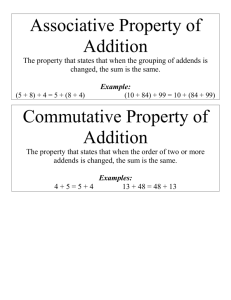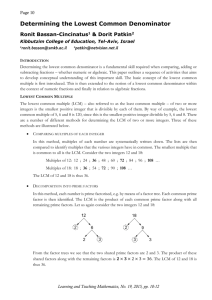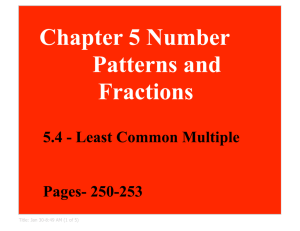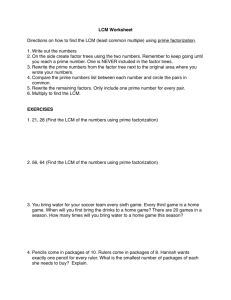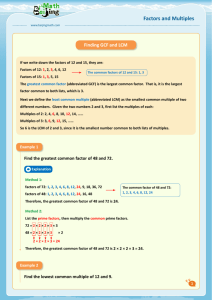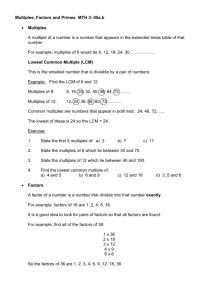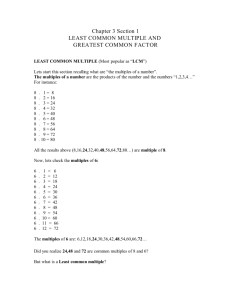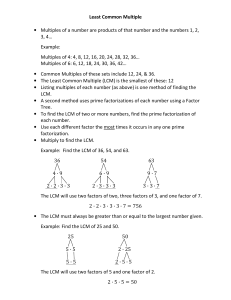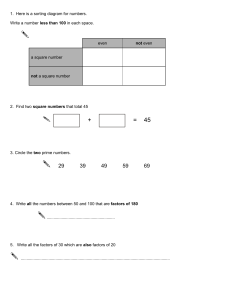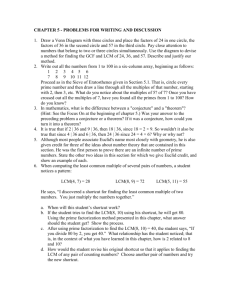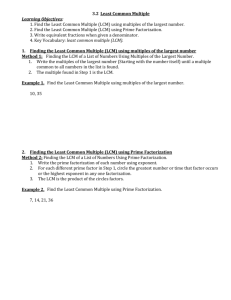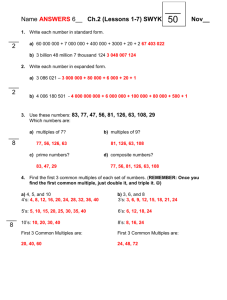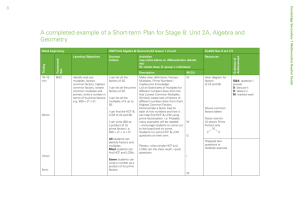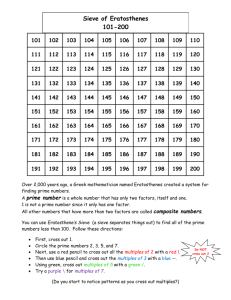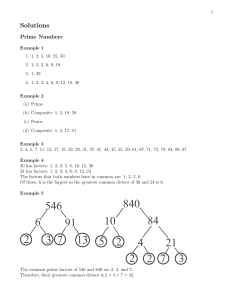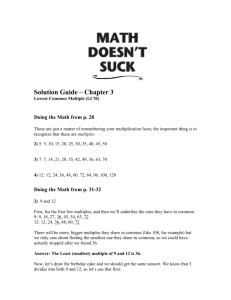Lowest common multiple - Portal
advertisement
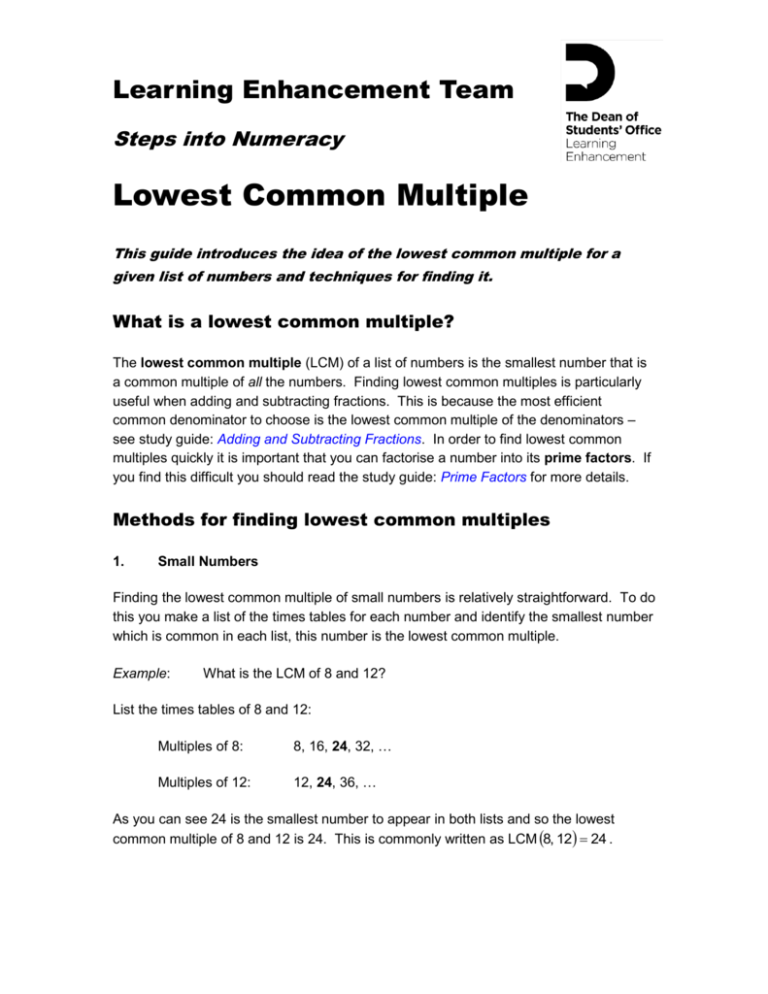
Learning Enhancement Team Steps into Numeracy Lowest Common Multiple This guide introduces the idea of the lowest common multiple for a given list of numbers and techniques for finding it. What is a lowest common multiple? The lowest common multiple (LCM) of a list of numbers is the smallest number that is a common multiple of all the numbers. Finding lowest common multiples is particularly useful when adding and subtracting fractions. This is because the most efficient common denominator to choose is the lowest common multiple of the denominators – see study guide: Adding and Subtracting Fractions. In order to find lowest common multiples quickly it is important that you can factorise a number into its prime factors. If you find this difficult you should read the study guide: Prime Factors for more details. Methods for finding lowest common multiples 1. Small Numbers Finding the lowest common multiple of small numbers is relatively straightforward. To do this you make a list of the times tables for each number and identify the smallest number which is common in each list, this number is the lowest common multiple. Example: What is the LCM of 8 and 12? List the times tables of 8 and 12: Multiples of 8: 8, 16, 24, 32, … Multiples of 12: 12, 24, 36, … As you can see 24 is the smallest number to appear in both lists and so the lowest common multiple of 8 and 12 is 24. This is commonly written as LCM 8, 12 24 . 2. Larger Numbers For larger numbers the first method can be lengthy. You should use the following method instead which involves prime factorisation of the numbers. Note that this method also works for smaller numbers. Step 1: Write the numbers in prime factor form. Step 2: Find the prime factors that are common to both lists. Then delete these common factors from the smaller number’s list. Step 3: Multiply the numbers remaining in the smaller number’s list and the larger number together. The result is the lowest common multiple. Example: What is the LCM of 240 and 924? Step 1: In terms of prime factors, 240 2 2 2 2 3 5 . In terms of prime factors, 924 2 2 3 7 11. Step 2: You have 2 2 3 common in both lists. After deleting 2 2 3 from the prime factors of 240 you have 2 2 5 remaining. Step 3: To find the lowest common multiple you multiply 2 2 5 by 924 to give LCM 240, 924 2 2 5 924 18480 . Further guidance and information If you have any further questions about numeracy, or would like to discuss any other aspects of mathematics, you can talk to your lecturer or Personal Adviser, or make an appointment to see a Learning Enhancement Tutor in the Dean of Students’ Office. Telephone: Email: Website: 01603 592761 dos.help@uea.ac.uk http://www.uea.ac.uk/dos/let There are further resources on many other aspects of numeracy, mathematics, statistics and science available from the Dean of Students’ Office and on its website. These include questions to practise, model solutions and webcasts illustrating essential skills. This guidance leaflet is one of a series on mathematics produced by the Dean of Students’ Office at the University of East Anglia. Scan the QR-code with a smartphone for a webcast of this study guide.

